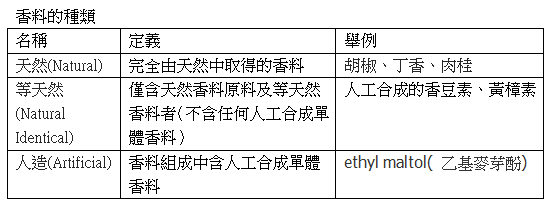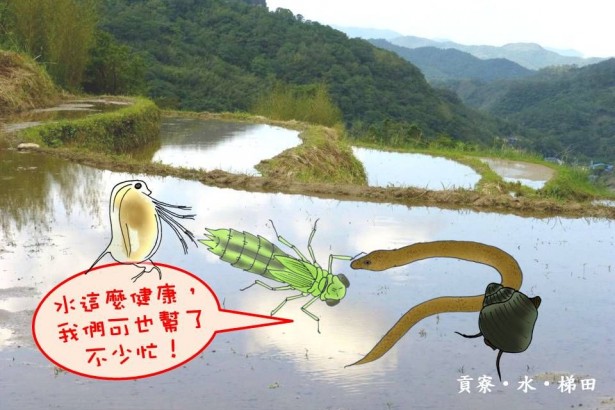In line with international standards, the Ministry of Health and Welfare hopes to list 3,000 spices by the end of the year.
Share47 +18 Tweet2 EmailShares 57
The use of spices in food is very extensive, the United States, the European Union, Japan, have established more than 2,000 legal or recommended use of "Flavor Substances" list, but China has so far only listed 76 single flavor substances, 14 types of compounds, there is no clear establishment of a local list available, the industry to import and export, can only quote foreign information.
The Ministry of Health and Welfare yesterday invited experts from the United States, Japan and the European Union to hold the "International Symposium and Workshop on Food Flavors: Safety Assessment, Regulations and Model Operations", hoping to establish a local flavor system by the end of the year, with an estimated positive list of 3,000 flavor substances and international standards.
There is no matching for the inspection and registration of waste spices
Spices have a history of thousands of years all over the world. In addition to natural spices such as pepper, cinnamon and vanilla, manufacturers also synthesize various spices from nature or laboratories. According to the source and preparation method, they are divided into natural (Natural), natural (Natural) and artificial (Artificial). But either way, a spice is usually composed of dozens or even hundreds of "spice substances", and there are 340 natural compounds in the apple aroma in nature.
To make it easier for the industry, the Joint Expert Committee on Food Additives (JECFA) of FAO and WHO, the Food Flavoring and Extract Manufacturers Association of the United States (FEMA), the International Flavoring Industry Organization (IOFI), and the Ministry of Health, Labor, and Welfare of Japan have directly established lists of 2 to 3,000 flavoring substances that can be used. The U.S. Food and Drug Administration legalized the FEMA list in 1958, adding non-listed spices violated the U.S. esophageal law, and the European Union also fully incorporated the IOFI list into law on October 22 this year.


After the illegal use scandal in Japan in 2002, Japan actively reviewed the system, hoping to narrow the differences with other countries (Photo/Lin Huizhen)
However, it is not difficult to agree on a list. Only spices approved by a single organization are difficult to choose. Japan's experience is particularly worth thinking about in Taiwan Province, but subverting the image of model students, Japan is a negative teaching material this time.
In 2002, Japan revealed that the industry had long used acetaldehyde, propionaldehyde and castor oil, which were not on the approved list, and sold them to at least 600 downstream enterprises, shocking the whole of Japan. However, unlike the plasticizer incident in Taiwan, these substances could be legally added abroad, but they were not listed by the government.
As early as 1947, Japan listed the available spices on the positive list, so there are many "Japan Only", or not included spices, after the incident Japan comprehensively reviewed the system, hoping to synchronize with the international. Hiroshi Okamura, senior consultant of Hasegawa Spice Co., Ltd., Japan's largest spice factory, said that there were more than 1,000 spices only available in Japan two years ago, but now there are more than 700, half of which have not been used, leaving only more than 200 items to be further discussed. "It's best for the Taiwan government not to learn from Japan. It should refer to FEMA and the EU list and connect with the world."
However, according to customs information, Taiwan most often imports spices from Japan, Japanese experts said this, some operators on the spot sharp questions: "Do not learn from Japan, the list of Taiwan operators is not immediately illegal?" In response, Zhang Yueying, secretary-general of Taiwan's International Life Sciences Society, who has long-term contacts with Japanese spice manufacturers, said that Japan expects to spend three years to make Japan Only spices disappear. Taiwan should implement a three-year buffer period simultaneously with Japan and will not immediately ask manufacturers not to use them.
In recent years, international organizations have actively consolidated lists in the hope of eliminating trade barriers. If operators want to stay on the list or submit new substances, they must submit their own safety and relevant certificates. Gao Yiting said that more than half of Taiwan's spices are imported from abroad, so they should mainly be internationally available spices. However, in the screening process, it is necessary to clearly understand why Taiwan needs this item and for whom. Currently, a screening mechanism is still being established. Only after the system is complete will the full list be published.
Government regulations are full of loopholes. It's hard to tell whether spices are natural or not.
FEMA Fragrance Manual
Share47 +18 Tweet2 EmailShares 57
- Prev

Wanbao Watermelon Festival X Green School starts in 2014
Wanbao Watermelon Festival X Green School starts in 2014
- Next

Regardless of blue and green, rain and dew are equal & # 8212-water terraces are really great!
Regardless of blue and green, rain and dew are equal & # 8212-water terraces are really great!
Related
- A course of planting techniques and methods on how to grow carrots
- How to plant the latest tulips?
- Is it better to pick tea in the morning or in the afternoon? When is the best time for tea to be picked? what is the third or fifth tea?
- Launch Yuanxiao Happy combination Haocha + Tea Yuan healthy Taste
- Penghu Tourism "Fireworks 20 Parade with You"
- 2022 West Lake Happiness holds "Digital Revitalization Voucher" and draws iphone13 and laptop.
- Banqiao Fuzhou social houses are designed to change start-up combined with police elimination to create a safe and livable environment
- The convenient measure of "mechanical weeding" in Xinbei has been abused and the Agriculture Bureau has imposed heavy penalties on the illegal land consolidation.
- Changgeng University Joins Hands with Four Memory Factories to Rescue Memory Talent Shortage
- The list of Taiwan's top 100 MVP managers is listed by the Director-General of the Farmers' Association of Sanxia District.

